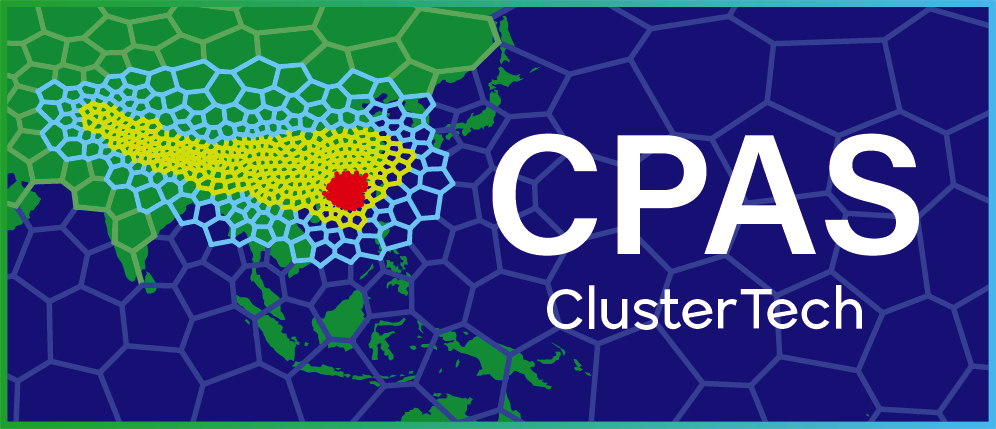From PR Theory to WRF Implementation: A Study on Lightning Prediction
Author: Tsz Lam Yiu, Editor: Simon Tin
Introduction:
Lightning is the most frequent natural hazard in Hong Kong (HKO, 2007). Although the direct impact of lightning strikes on people or fires may seem less common, the risk is far from negligible. With the rapid development of the low-altitude economy — from drones for deliveries to the potential of air taxis — the demand for accurate and timely lightning prediction will only grow stronger in the coming years.
PR scheme:
A huge part of numerical weather prediction (NWP) relies on what we call physics parameterization. The reason is well known: many physical processes in the atmosphere occur on scales much smaller than the grid size of the model. Since these processes cannot be directly resolved, we approximate them using empirical functions or statistical results — in other words, parameterizations. A good parameterization must satisfy two conditions: (1) it should be physically reliable, and (2) it must also be computationally efficient. This second requirement is often overlooked, but it is critical — weather forecasts need to be produced quickly, and overly complex schemes can drive up both time and computational cost.
There have been many different attempts to parameterize lightning, including diagnostic approaches such as the Lightning Potential Index (LPI) and the Price–Rind (PR) scheme, as well as prognostic approaches like WRF-ELEC. Surprisingly, the PR scheme — although very simple (details to follow) — performs quite well. (Wong et al., 2012) have shown that the PR scheme remains competitive in capturing lightning activity.
Theory:
The PR scheme was introduced by Price and Rind (Price & Rind, 1992). It is a classical diagnostic lightning scheme: instead of predicting the microphysical mechanisms of lightning directly, it relies on indicators that correlate with lightning activity.
The idea is based on simple dimensional analysis. Suppose the cloud height is H. Assume that the flash rate should be proportional to the electrical power of the cloud. From classical electromagnetism, the potential difference is:
where K is a physical constant, and q and q′ represent the charges of the two cloud dipoles(see fig. 1), respectively. The electrical power can be expressed as
If we assume that two dipoles exist within the cloud, then the distance between them is on the order of the cloud height, so
Meanwhile, the total charge is proportional to the storm volume:
Combining these assumptions gives
where F is the flash rate.
From observations, Price and Rind determined the empirical formula for continental storms:
where H is the cloud depth in meters. This is often referred to as the PRz scheme (cloud-depth-based).
They also found a relationship between cloud depth and maximum updraft velocity, w_max, analogous to a potential–kinetic energy link:
This leads to the PRw scheme (maximum-updraft-based).
Figure 1: A schematic diagram illustrating the dimensional analysis procedure of the PR scheme.
WRF Implementation:
Now that we have covered the theory, let’s look at how the WRF lightning schemes implement the PR methods. In WRF, two options are available: PRw and PRz. Their logic can be summarized in the following flow: (source code)
Figure 2: Flow chart of the WRF flash rate calculation. The highlighted branch indicates the difference between PRz vs PRw.
Step 1: Pre-determine if a convective cloud exists
- Both PRw and PRz first check if reflectivity is above a threshold — usually 20 dBZ based on experience
Step 2: Calculate total flash rate
- PRw scheme: the maximum updraft speed in the whole vertical column is taken.
- PRz scheme: the cloud depth is calculated as the highest point still showing convection (reflectivity > 20 dBZ) minus the terrain height.
Step 3: Locate the most convectively active part of the atmosphere
- Identify the layer of the storm with the strongest convection, meaning the highest level where reflectivity is greater than 20 dBZ.
Step 4: Distribute the flash rate
- Once the total flash rate is calculated, WRF distributes it equally across the most active layer (the “widest part” of the storm column).
Figure 3: A schematic diagram illustrating how PR92 defines cloud top and distributes flash counts in a patch[1] (or domain). With the swirl symbol indicating strong convection (i.e. cells where the reflectivity exceeds 20 dBZ)
Possible Improvement:
Here we outline several aspects where the scheme could be further improved (this is not intended as criticism).
- Patch-based logic
- The scheme uses a patch-based computational logic, which is efficient but may ignore geophysical structures such as storm shape or terrain influences.
Figure 4: Example output from the WRF lightning parameterization scheme at 2024-04-30 19:00, showing a clear discontinuity in the field caused by the patch logic.
- Uniform flash-rate distribution
- The scheme distributes the flash rate evenly across all grid points with reflectivity above the threshold.
- In reality, this may not make sense: clouds with greater depth and stronger convection should naturally produce more flashes than weaker ones.
- Cloud depth calculation
- The scheme assumes that cloud depth is essentially the distance from the storm top down to the terrain.
- This simplification treats the cloud bottom as the terrain, which can be inaccurate, especially in regions with complex topography.
[1]: A “patch” is a subdomain used by WRF to divide the computational domain for parallel processing; it has no geophysical significance.
References
HKO. (2007). Lightning Initiation and Intensity Nowcasting Based on Isothermal Radar Reflectivity - A Conceptual Model.
Price, C., & Rind, D. (1992). A Simple Lightning Parameterization for Calculating Global Lightning Distributions. Journal of Geophysical Research, 97(D9), 9919–9933. 92JD00719
Wong, J., Barth, M. C., & Noone, D. (2012). Evaluating a lightning parameterization based on cloud-top height for mesoscale numerical model simulations. Geoscientific Model Development Discussions, 5(4), 3493–3531. 10.5194/gmdd-5-3493-2012
